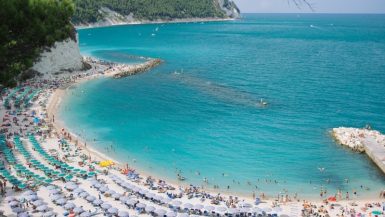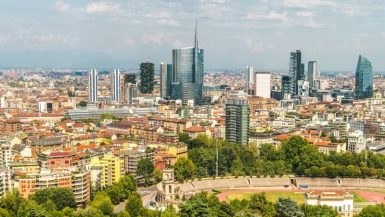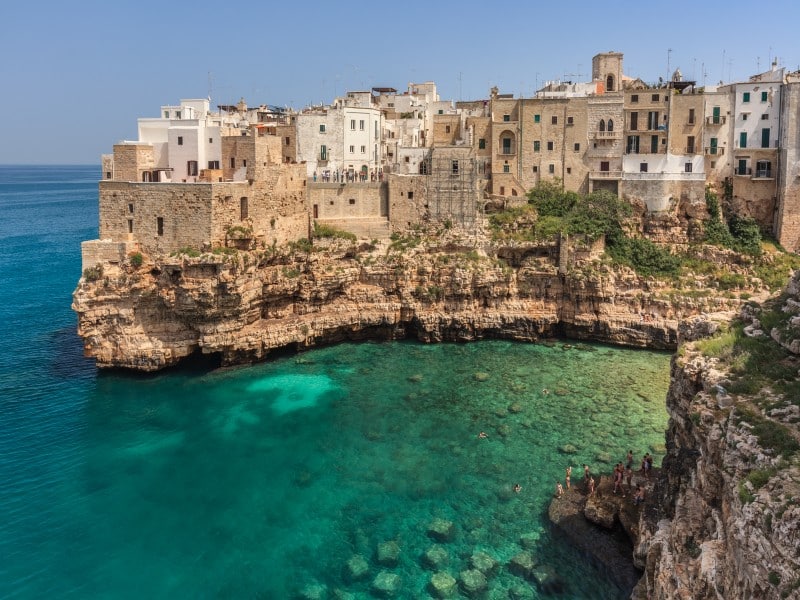
Is Bari worth visiting? The simple answer is yes! But then we’re biased when it comes to Italy. We think virtually EVERYWHERE on the boot is worth visiting. So, just to fend off accusations that we’re saying come here because we’re obsessed with Italia full stop, here are five distinct reasons why Bari itself should be on your bucket list…
From the sun-kissed beaches of the Adriatic to the tempting white wines that are served in the local osteria, the immersive heart of old Bari to the churches and palazzos that rise in the center, there are all sorts of things to mention.
There are other bonuses to Bari that we haven’t mentioned here. For example, the town is so far south that it gets longer summers than the rest of Italy. It’s also cheaper than the mainstay destinations up north – Milan, and Florence. But, without further ado, here’s our top selection to answer “is Bari worth visiting?”
Beautiful Bari Vecchia
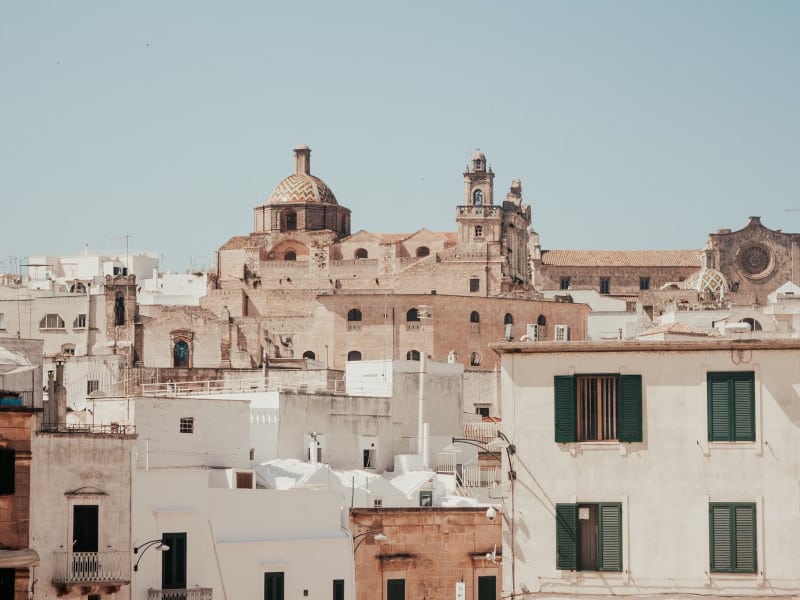
Bari Vecchia, the oldest part of the city, is a neighborhood to rival Rome’s Centro Storico and the heart of Florence. Also known as San Nicola, it’s been built upon and rebuilt upon almost continually for the last 2,500 years. That results in a maze of alleys and narrow streets. Some go this way past crooked and sloped piazzas. Others delve that through clusters of churches and chapels that jostle with trattoria and wine bars for urban space that’s in short supply.
There are some fantastical architectural highlights that you’re going to want to seek out within. First, hit the Basilica of Saint Nicholas. It’s a major pilgrimage destination for Catholics and Orthodox Christians alike. Dating from the 11th century, it was once under the sway of the Byzantines and has the gold-leafed ceiling frescos to show for it. Second, head to the Church of Saint Gregory, the oldest in the city that dates back to the 900s AD!
Perhaps more than anything, the Bari Vecchia is about soaking up the local vibes and the ebb and flow of local life. Sit with an espresso on the wonky cobbles of Strada Palazzo di Città and gaze up at the gulls flitting around the church spire. Stroll the port area to see the leather-faced fishing folk hauling off the catch of the day. Go to the Piazza dell´Odegitria for a glass of crisp white wine as the light fades on the church facades. Lovely stuff.
The beaches
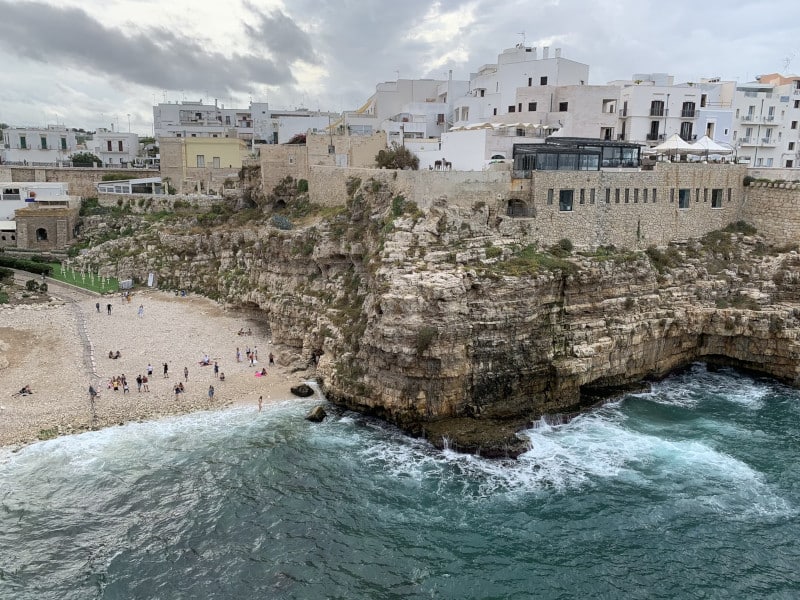
Bari is smack dab midway down the shoreline of the Puglia region. That means the Adriatic Sea starts right on the doorstep. It also means that there are beaches aplenty to get through. So, pack the swimming stuff and ready the sunscreen. Trips here anytime between May and September can be filled with days of sunning yourself on the pebbles and splashing in the saltwater.
There aren’t great options on the beach front in the heart of the city itself. That’s mainly because most of Bari’s seafront is given over to a huge ferry port and the remains of an ancient port. The nearest sands are 10 minutes’ drive to the southeast or 10 minutes’ drive to the northwest of the Bari Vecchia old town, although there are regular urban buses that can take you to them throughout the summer months.
Here are some of the best:
- Spaggia Pane e Pomodoro – Literally called Bread and Tomato Beach, this long and wide stretch of shore is known for its kitesurfing.
- Spiaggia Torre Quetta – The coast gets rougher here, so pebbles take over. The sea is an inky blue and there are blustery spots for sunbathing in the Adriatic Breezes. This one’s 15 minutes’ drive south of the main town.
- Canalone – Canalone is one of the best swimming spots in Bari. A shallow entry point next to a manmade breakwater, it’s usually calm and clear. Gets busy in the summer months.
We’ll talk a little more about exploring the rest of Puglia below, but suffice to say that you’re also within striking distance of the postcard-worthy beach of Lama Monachile while staying in Bari. It’s in a town just down the coast, offering swimming between two steep cliffs topped by ancient coast cottages. It’s also regularly named among the best beaches in the country!
Because it’s easier to reach than ever before
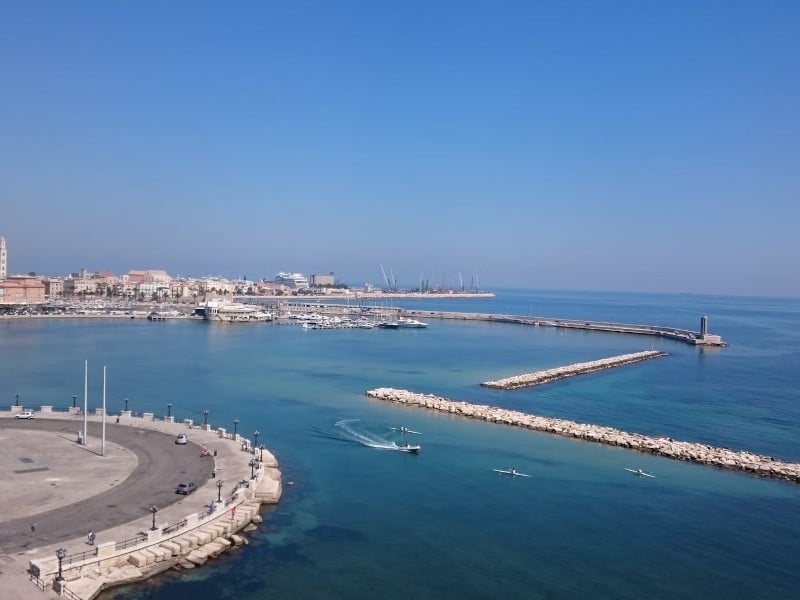
Yep – Bari is now easier to get to than it ever has been. And we say that in the knowledge that it was once one of the principal ports of the Roman empire! Today, you can jet in, hop on a high-speed train, or even cross the Adriatic like the ancients did on a ferry (though we’d hazard a guess that the boats are a touch more comfortable these days).
The most common route is via the air. Cue the Bari International Airport-Karol Wojtyla. A fast-growing low-cost hub for the likes of Ryanair and easyJet and others, it’s risen to become one of the main arrival spots in southern Italy. You can whiz over on routes from London, Frankfurt, Vienna, and Brussels, and even connect through from major long-haul hubs like Istanbul (great news if you’re flying in from the US or Canada).
Also remember that there’s loads of access from the sea. Bari hosts perhaps the largest array of cross-Adriatic ferries in Italy. They come in from Patras and Igoumenitsa in Greece, usually taking around 12 hours to swap sun-kissed Greek isles for the Apulian coast. They also come over from the amazing city of Dubrovnik in Croatia and Kotor in Montenegro.
Adding to all that is the fact that Bari is now one of the southerly terminuses of the Italian high-speed rail network. You can hop on one of the uber-quick Frecciargento trains in Rome and be here in just a matter of hours (usually 4-5 hours). That opens up links that come in from Milan, Florence, and even as far north as the Alps.
There’s basically no excuse NOT to visit Bari these days it’s that simple to reach!
To explore Apulia (Puglia)
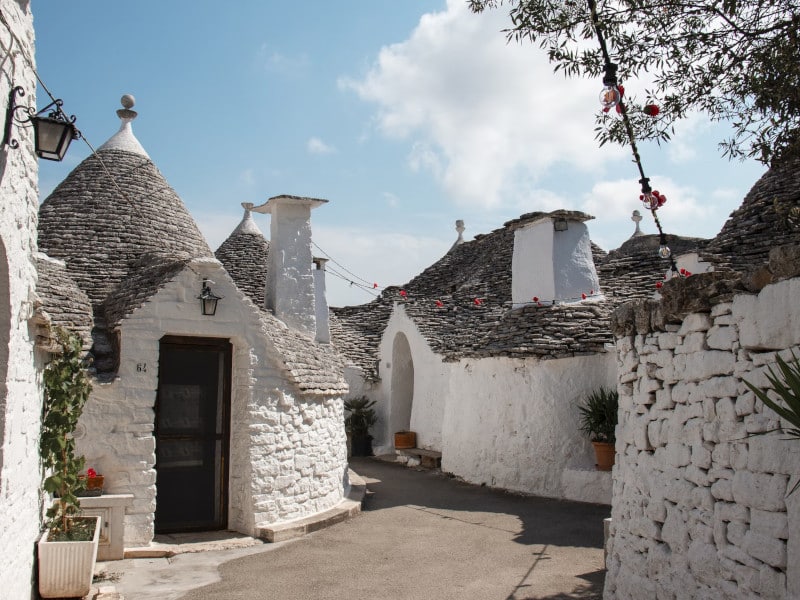
Bari is one of the best gateways to the whole region of Puglia. That covers the entirety of the heel of Italy and it’s a glorious, glorious place to explore. For this, you’ll need your own rental car and bit more time. A week or two should be plenty to see the main highlights, though we could easily spend months and months enjoying the salty beaches and the enthralling UNESCO towns that abound.
So, what’s there to see? Let’s start on the coast. Head north from Bari and you’ll eventually come to the Gargano National Park (it’s about 1.5 hours’ drive). That’s got eye-watering runs of coastline beset by chalk-white cliffs and big sea stacks, along with caves and snorkeling reefs. Go south for the same distance and you’ll enter a string of resorts that hit a zenith with Polignano a Mare, a medieval port famed for its clear-blue swimming coves.
History buffs should be certain to make the two-hour jaunt south to Lecce. That town is a symphony of Baroque building work and one of the oldest centers in southern Italy. You’ll get lost in the piazzas and cathedrals before sampling rich pasta ragu and zesty white wine. The castle town of Taranto is also a doozy, as are the Trulli villages of Alberobello – now a World Heritage Site.
The food and drink
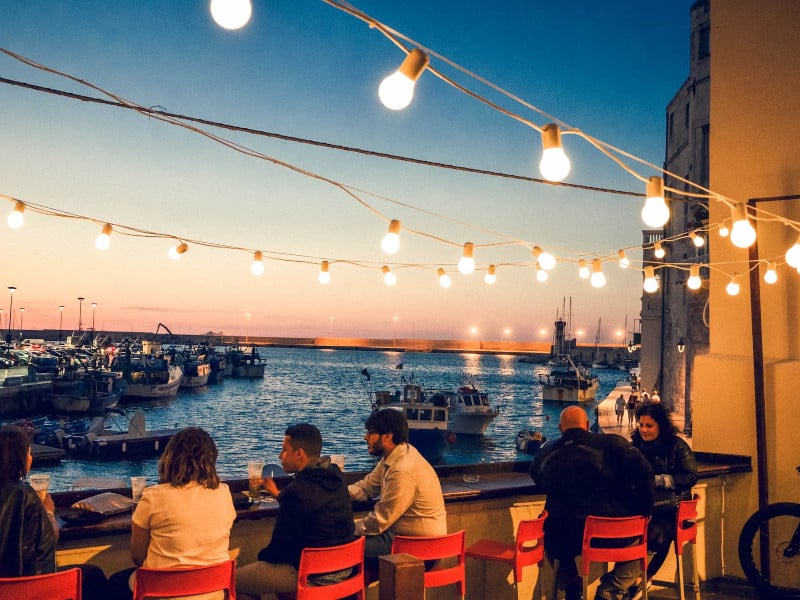
Bari is a top place to sample the local Apulian cuisine. They call this part of the boot the Breadbasket of Italy. It’s home to some of the biggest farms, most productive vineyards, and most sprawling orchards and growing forests of anywhere in the country. Plus, the Adriatic Sea and all its salty bounty is right on the doorstep. The upshot? Foodies will have oodles in the way of tasty dishes and accomplished wines to get through. Let’s take a deeper look…
The cuisine here blends the rusticity and earthiness of northern Italy with a touch of the Med a la Greece and the Balkans. Many plates will mix meat and fish, and there’s a heavy use of rice courtesy of the influence of long-held trading routes with North Africa.
Mainstay dishes that usually figure highly on menus include the riso, patate e cozze, a sort of oven-baked paella with fresh-caught mussels. Also from the oven comes tomatoey pasta al forno, while the ragu alla barese takes its nod from the inland farms of Puglia to create a rich stew of red wine and game meat that matches well with crusty bread and cheese.
Of course, you’ll want to pair all that with a good wine. And there’s plenty of good wine on offer in this port town. The immediate region is known primarily as a source of the Verdeca grape. It produces a light, zingy, and highly mineral white wine that actually originated in the volcanic soils nearer to Naples. For those with more of a sweet tooth, there’s Moscato di Trani, a rich DOC dessert wine that’s best after your main meal.
Is Bari worth visiting? Our verdict
Bari most certainly is worth a visit. We wouldn’t say to plan a detour here if you’re coming to Italy for the first time and want to check off Rome, Milan, and Florence. But, if you’re looking for somewhere a bit more off the beaten track that still oozes history and is easy to get to, Bari could be the one for you. It’s got 2,500 years of culture to its back, a wonderful old town area, and some of the finest beaches in Apulia. What more do you want?

